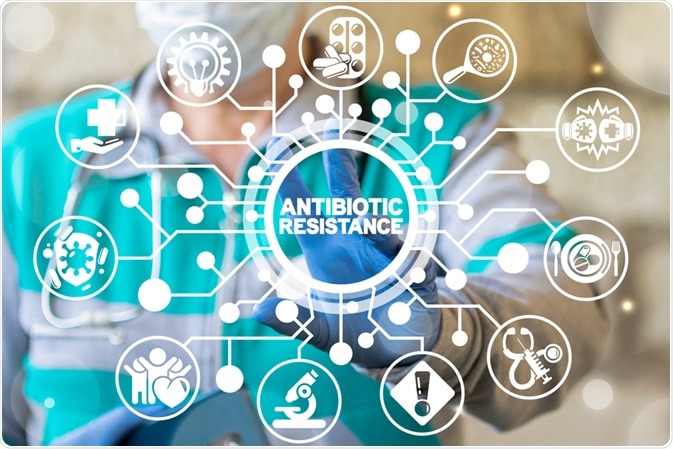The World Health Organization (WHO) recognizes the spread of antibiotic resistance as one of today’s biggest threats to global health, food security, and development. While antibiotic resistance can develop naturally, misuse of these medicines is propelling the spread of antibiotic resistance across the globe.
How can we solve the antibiotic resistance crisis? - Gerry Wright
As a result, certain infections including gonorrhea, pneumonia, salmonellosis, and tuberculosis are becoming increasingly difficult to treat. Patients are facing longer hospital stays, higher healthcare bills, and increased mortality. Global governments, private industries, and non-governmental organizations must collaborate to implement strategies to combat the growing threat of antibiotic resistance and reduce its impact on human health and health services.
The problem of antibiotic misuse
In 1929, Alexander Fleming discovered penicillin while working at St. Mary’s Hospital, London. This discovery ushered in the era of antibiotics, which has seen the number of deaths from infectious diseases greatly reduce.
In the early years following the discovery of penicillin, scientists embarked on a journey to make the antibiotic widely available. By the end of the Second World War, medicine was being used by Allied forces, making its name as a wonder drug. In the years that followed, there was a great demand for the antibiotic to be mass-produced so it could be used to treat a wide range of infections in patients around the world. This goal, to make antibiotics easily accessible to all is now the opposite of the challenge that modern-day scientists face.
Once antibiotics became established as a go-to drug for physicians treating a wide range of infections, their use propagated. These readily accessible medicines now pose one of the greatest risks to global health and it is their easy access, which was once strived for, that is at the root of the problem. Antibiotics are sometimes taken for granted and seen as a wonder drug. They are often not respected or understood, particularly by patients. Unfortunately, increasing global antibiotic resistance is the consequence of taking antibiotics unnecessarily or not taking them correctly.
Both healthcare professionals and patients are responsible for the misuse of antibiotics. Sometimes it is due to ignorance and other times it is due to negligence. Statistics estimate that roughly half of all prescribed antibiotics are not necessary, demonstrating the inability of a significant portion of healthcare professionals to restrict antibiotic prescriptions to cases where they are genuinely needed.
Antibiotics are prescribed incorrectly more often for some infections than others. Most commonly, viral infections (which do not respond to antibiotics) are misinterpreted as bacterial infections. This mistake accounts for 50-80% of all incorrectly prescribed antibiotics. Tonsillitis is such an infection that is often mistaken as being caused by bacteria rather than a virus. Pharyngitis is another commonly mistreated infection. Statistics show that in 80% of cases that present viral rather than bacterial symptoms, antibiotics are incorrectly prescribed.
Some infections have become increasingly challenging to treat due to antibiotic resistance such as gonorrhea, pneumonia, salmonellosis, and tuberculosis. If no action is taken, these previously simple to treat infections may see a surge in prevalence and require longer hospital stays and incur higher medical costs.
The same may follow for all infections for which antibiotics offer a simple treatment if steps are not taken to take antibiotic resistance.

Image Credit: Panchenko Vladimir/Shutterstock.com
How do we tackle antibiotic resistance?
To tackle antibiotic resistance, the misuse of antibiotics must be prevented. To do this, the common scenarios in which antibiotics are misused must be addressed. Some of the most common scenarios for incorrectly prescribing antibiotics are when they are prescribed for symptoms or illnesses that are not related to a bacterial infection, such as fever in the absence of an infection or their prescription for the asymptomatic colonization of skin ulcers, sores, and wounds.
As discussed above, antibiotics are also often incorrectly prescribed for viral infections. It is key that health care professionals who are responsible for prescribing antibiotics are made aware of the consequences of the misuse of antibiotics. Additionally, proper training and refreshers are required to guide health care professionals on how to properly prescribe antibiotics, voiding their incorrect prescription in these common scenarios described above.
Patient education is also fundamental to tackling antibiotic resistance. Often, patients request antibiotics for illnesses that cannot be treated by antibiotics, such as those caused by viruses, including colds, sore throats, flu, and chest colds.
Patients should be educated on the purpose of antibiotics so that they do not pressure health care professionals to prescribe them. Additionally, in some countries, some antibiotics are prescribed over the counter, presenting another source of incorrect prescriptions which could be tackled with the education of both the patient and the pharmacist.
Overall, the proper use of antibiotics must be enforced to prevent the spread of antibiotic resistance around the world. Without the implementation of strategies to prevent the misuse of antibiotics, more infectious illnesses will become challenging to treat.
References:
- Antibiotic resistance. World Health Organization. Available at: https://www.who.int/news-room/fact-sheets/detail/antibiotic-resistance
- López Romo, A. and Quirós, R., 2019. Appropriate use of antibiotics: an unmet need. Therapeutic Advances in Urology, 11, p.175628721983217. https://www.ncbi.nlm.nih.gov/pmc/articles/PMC6502979/
- WHO Department of Communicable Disease Surveillance and Response (2001). WHO Global Strategy for Containment of Antimicrobial Resistance. Available at: https://www.who.int/
- Zumla, A., Azhar, E., Hui, D., Shafi, S., Petersen, E. and Memish, Z., 2018. Global spread of antibiotic-resistant bacteria and mass-gathering religious events. The Lancet Infectious Diseases, 18(5), pp.488-490. https://www.thelancet.com/journals/laninf/article/PIIS1473-3099(18)30242-1/fulltext
Further Reading